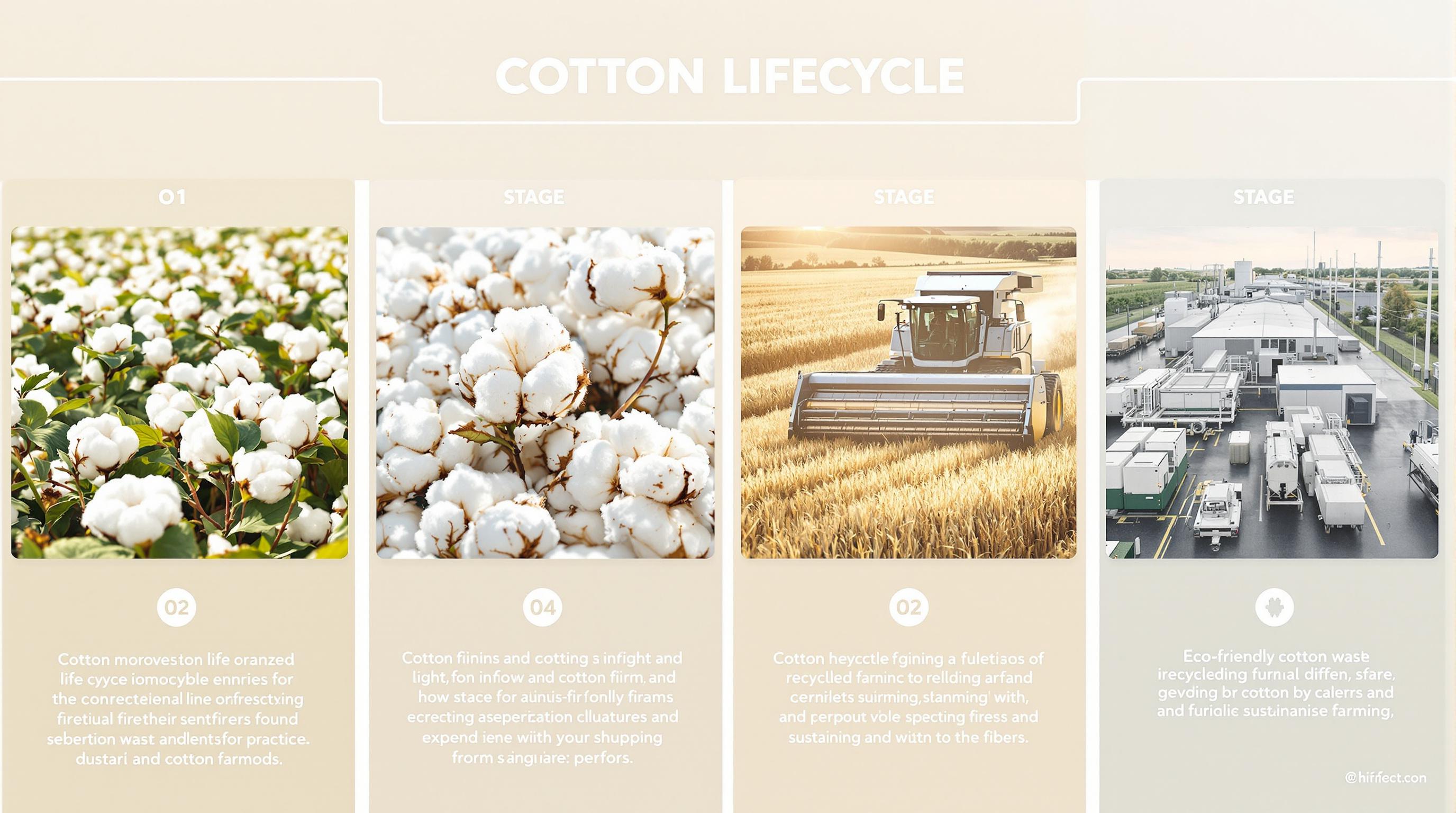Cotton gin residues are a cost-effective and sustainable option for cattle feed, but they require careful management to ensure safety and compliance. These byproducts of cotton processing, like burs, hulls, and plant debris, can reduce feed costs and waste when used properly. However, they must be tested for toxins like gossypol and limited to 20% of the animal's daily dry matter intake. Here’s what you need to know:
- Nutritional Value: Contains 8–12% crude protein and 40–50% fiber. Mix with energy-rich feeds like corn or molasses for better results.
- Safety Tips: Test for gossypol regularly, introduce residues slowly, and store them in clean, dry areas to avoid contamination.
- Regulations: Follow FDA and state guidelines, maintain records, and source from registered gins.
Feeding Our Cattle, Gin Trash. Is it Healthy?
What Are Cotton Gin Residues?
Cotton gin residues, often called gin trash, are the leftover plant materials removed during the process of separating cotton fibers from seeds at gins.
Types and Components
The makeup of cotton gin residues depends on factors like the cotton variety, harvesting methods, weather conditions, and the equipment used at the gin. These residues typically include:
- Cotton burs and hulls
- Leaf fragments and small fibers
- Small stems and sticks
- Seed pieces and fibers
- Other plant debris
Availability by Region
Cotton gin residues are plentiful in major cotton-producing states like Texas, California, Georgia, and Mississippi. You can use resources like cottongins.org to find gins in your area and coordinate deliveries.
Next, we’ll look at how these residues can contribute to cattle feed nutrition.
Feed Value and Usage Methods
Now that we've covered the components and availability of gin residues, let's look at their nutritional profile and how to use them effectively in feeding.
Cotton gin residues typically contain 8–12% crude protein, 40–50% neutral detergent fiber, and small amounts of minerals like calcium and phosphorus. These values can vary depending on factors like gin efficiency and the moisture content of the residue. On-farm testing can be a cost-effective alternative to lab testing for assessing these variations.
When feeding, limit residues to 20% of the animal's daily dry matter intake. To improve energy levels and taste, mix them with energy-rich feeds such as corn or molasses. This approach not only enhances feed quality but also helps reduce waste. Additionally, always provide animals with free-choice access to salt and a mineral mix.
For consistent results, test bulk samples every three months for protein, fiber, and moisture levels. Use these results to adjust inclusion rates and maintain the desired nutritional balance in your feed. Regular testing ensures the feed remains reliable and effective.
sbb-itb-0e617ca
Advantages as Cattle Feed
Farmers located near cotton gins can benefit from a steady and affordable source of feed, cutting down on transportation costs and building direct connections with suppliers. Tools like the cottongins.org directory make it easier for producers to find nearby gins, ensuring a consistent supply while also reducing waste management expenses. However, it's important to balance these benefits with safety concerns.
Safety Issues and Management
Gossypol, a natural toxin found in cotton, can negatively affect cattle growth, reproduction, and overall health. To maintain herd performance, it's crucial to handle residues with care.
Make gossypol testing part of your routine feed analysis, alongside protein, fiber, and moisture checks, to ensure safer feed management.
Risk Mitigation and Quality Control:
- Test for gossypol regularly: Include it in your standard nutrient analysis before feeding residues.
- Introduce residues slowly: Monitor cattle closely and adjust inclusion rates based on their response.
- Keep detailed records: Track test results and herd health to identify any patterns or concerns.
- Store properly: Use clean, dry, and well-ventilated areas to prevent issues like mold or contamination.
- Source responsibly: Partner with gins that adhere to strict manufacturing practices to ensure a reliable and safe supply.
Up next, we’ll cover the legal requirements and best practices for handling residues on the farm.
Rules and Usage Guidelines
Cotton gin residues used in livestock diets are regulated by both federal and state authorities.
Legal Requirements
- The FDA mandates that cotton gins register as suppliers of feed ingredients.
- State agriculture departments require feed permits and conduct annual inspections.
- Gossypol levels in complete feeds must stay below 0.04% dry matter.
- Written records of feed composition and testing must be kept.
- Feed labels must include "cotton gin by-product" and provide nutrient guarantees.
Handling Steps
- Only collect residues from registered gins that follow Good Manufacturing Practices.
- Test moisture content before accepting residues; it must be under 12%.
- Store residues in clean, covered areas with proper ventilation.
- Limit residues to 20% of total dry matter intake in feed mixtures.
- Conduct quarterly nutrient and toxin analyses through certified labs.
- Maintain detailed logs, including source, testing dates, and inclusion rates.
- Clean storage areas monthly to prevent mold growth.
- Check feed bunks daily to ensure proper consumption and quality.
Routine testing for nutrients and toxins ensures consistent feed quality. Adhering to these guidelines helps maintain safety and compliance while optimizing feed use.
Conclusion
Using cotton gin residues from approved sources and storing them properly can help cut costs, minimize waste, and benefit local farming efforts.
To make this work effectively, it's crucial to follow safety rules, meet regulatory requirements, and conduct thorough quality checks. Storing the residues correctly and performing regular nutrient tests ensures the feed remains safe and supports animal health. As noted earlier in the section on Safety Issues and Management, frequent gossypol testing is essential. Additionally, make sure your supply chain meets these safety and quality benchmarks.
Finding reliable suppliers is key to maintaining feed quality. Check out the directory at cottongins.org to locate trusted cotton gins near you.


